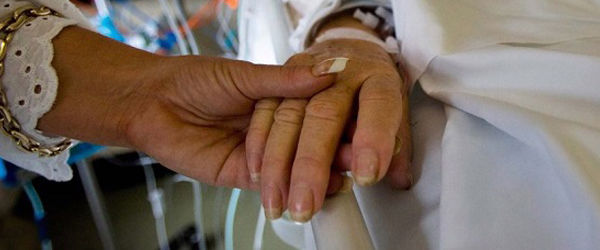The great value of religious images such as this is that they transcend language. We experience something when we view their beauty that we cannot fully express in words. Yet there are meanings and lessons also being offered.
Next year in 2012 we will celebrate the tenth anniversary of the canonization of Saint Juan Diego by Pope John Paul II and it is a good time to reflect on the meaning of these events. In addition to the blessings given to us by the Virgin Mother, I believe Juan Diego brings his own gifts.
The first gift is the example of Juan Diego’s courage in facing his own difficult situation. He was a man without power or status, a poor survivor of a war that had destroyed the world he had known since childhood.
At some point Juan Diego must have felt hopeless. He was living in the ruins of the society in which many of the sacred symbols of his native religion had been destroyed during the Spanish Conquest. Some historians have even suggested that many of the indigenous people, believing that their gods had abandoned them, were literally dying of despair. Juan Diego had lost his past and faced an unknown future.
Yet he opened his heart and mind to a new faith and inspiration. The first indigenous person in the New World to be recognized as a saint, Juan Diego became a Christian and, in taking a new name, became a new person --- but without rejecting his people or lessening his love for them.
His courage can be inspirational to us today. Many people in our own time, especially the young, now feel a great uncertainty about their identity and their future. This anxiety isn’t limited to those who have immigrated and who, like Juan Diego, are struggling to adapt to a new language and culture. This anxiety is shared by many others whose families have been broken by divorce or addictions, or forced to move because of economic hardships.
Juan Diego had the courage and determination not to give in to despair but to open his heart to God. As a Christian convert he found a new relationship with God through Christ and then, miraculously, was blessed with a great revelation in his encounter with the Blessed Mother. He did not abandon his people but prepared the way for them to follow him into a more loving relationship with the God who was Father to all, with Jesus, the Savior of all, and Mary, the Mother of all.
We are living in an historical era of mass migrations around the world, not just in our hemisphere. Literally millions of people are seeking a better life, crossing borders, even coming from other continents. Like Juan Diego, we also are watching cultures come together with difficulties caused by fear and misunderstanding. We too may be experiencing the “birth pangs” of something new that is being born, a more truly “catholic” culture that is inclusive of many different peoples and therefore becoming a more universal Catholic Church.
Another gift from Juan Diego is the rich imagery that the miracle has inspired. Initially Juan Diego was often depicted as a mestizo, that is, the mix of Spanish and indigenous that became “Mexican.” In time, however, he was portrayed more accurately as an “Indian.” We must remember that all of these images, in different ways, tell a story meant to bring us together.
Nor is the beauty of the Virgin Mary, depicted as a young mestiza, incidental to this story. Beauty whether found in human features or nature is a form of Revelation and speaks its own language. A beautiful image that is a work of art has many of the qualities that we associate with faith and prayer. They don’t just “paint a picture” but evoke the presence of God.
Finally, the gift of St. Juan Diego is to remind us of the meaning and importance of saints. The key to personal transformation in the Middle Ages was a faithful confidence in the power of the saints. We need to recover this faith and confidence. This doesn’t mean just recognizing a supernatural or miraculous power but rather letting the saints guide us in ordinary life.
The saints weren’t angels or merely miracle workers. They were human beings like us. By what they did, they teach us what we can do.
Juan Diego is a saint not simply because of his personal “heroic virtues,” but because God shines through him. Saints reveal God’s will, not their own. Let us turn to Saint Juan Diego in our prayers together so that he will help guide us to become one people united in faith, just as the Virgin of Guadalupe did for the people of Mexico.
Let us pray through Juan Diego, as well as through the Virgin, that we might become what Jesus asks of His Father --- that “they shall be One, as you and I are One.”
Ron Austin is the author of “Peregrino: A Pilgrim Journey into Catholic Mexico” (Eerdmans Press), recipient of the 2011 second place book award in history from the Catholic Press Association. This concludes a two-part series.
{gallery width=100 height=100}gallery/2011/1209/juandiego/{/gallery}

